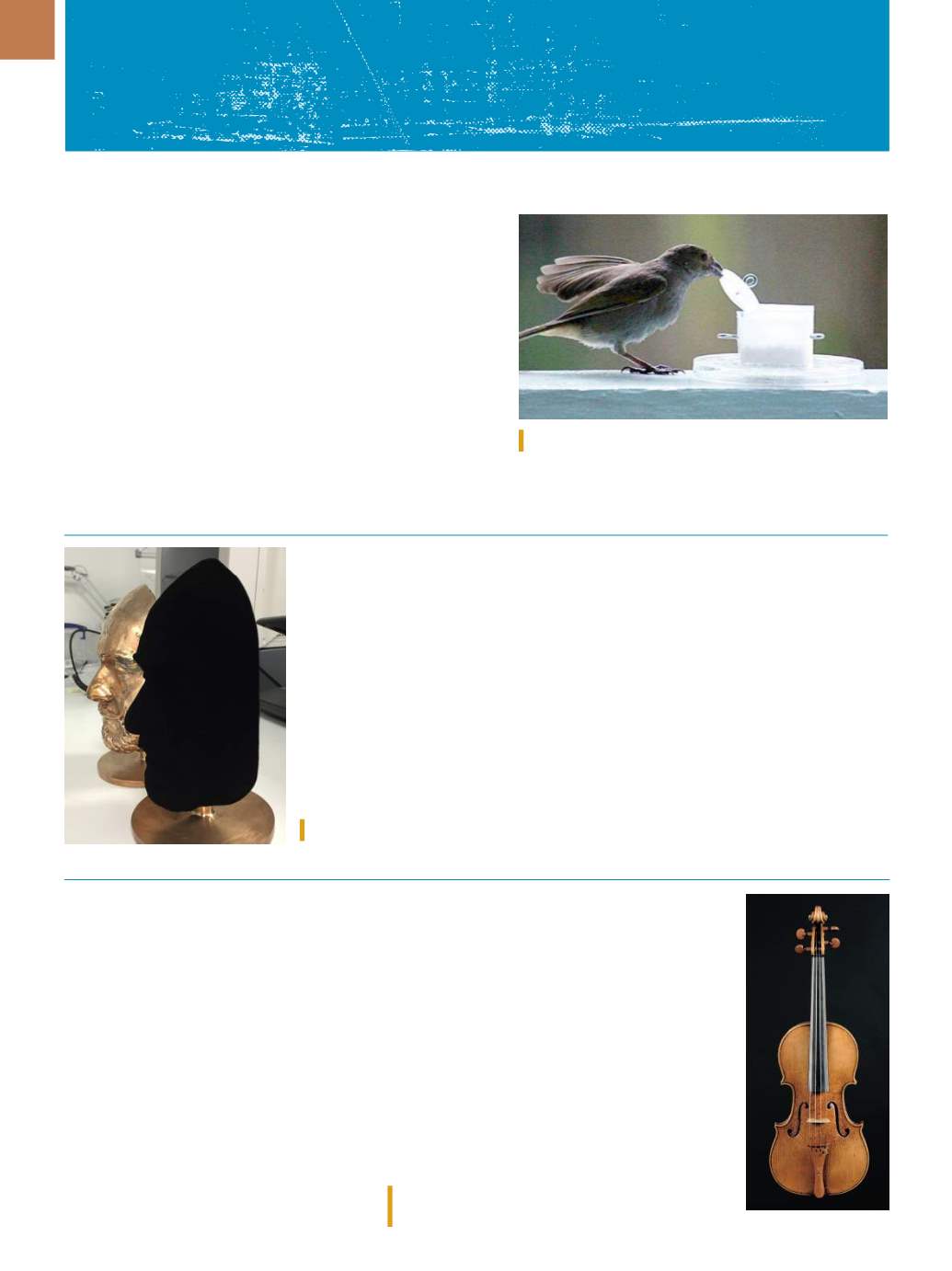

4 6
STRESS RELIEF
A D V A N C E D M A T E R I A L S & P R O C E S S E S | M A Y 2 0 1 6
RURAL BIRDS ARE COUNTRY BUMPKINS
Birds living in urban environments are smarter than rural birds
because they adapt to their city dwellings, enabling them to exploit
new resources more favorably than their rural counterparts, accord-
ing to researchers at McGill University, Canada. In a first-ever study
to find clear cognitive differences in birds from urbanized compared
to rural areas, researchers report key differences in problem-solving
abilities such as opening drawers to access food, and temperament
(bolder) among city birds versus country. The team tested the two
groups of birds using not only associative learning tasks, but also
innovative problem-solving tasks.
“We found that not only were birds from urbanized areas better
at innovative problem-solving tasks than bullfinches from rural environments, but that surprisingly, urban birds also had better
immunity than rural birds,” says Jean-Nicolas Audet, a Ph.D. student.
mcgill.ca.
VIOLIN VARNISH PROTECTS AND TONES
Varnish does more than provide a protective sheen to a violin. It influences the vibrations and
impulses that the wood absorbs and therefore the quality of sound the instrument produces, says Mar-
jan Gilani of the Swiss Federal Laboratories for Material Science and Technology (EMPA), Switzerland.
Gilani and her colleagues demonstrate the importance of the vibro-mechanical properties of varnish, its
chemical composition, thickness, and penetration into wood.
Often, a violin’s sound board is made of spruce tonewood. Varnish is applied to protect the wood
from the long-term effects of humidity and wear. Violin makers normally have their own particular meth-
od for applying varnish to finished instruments. It is applied in liquid form, and then dries to a solid
transparent film. All varnishes were found to increase damping throughout the wood surface. A moder-
ate increase of damping can, in general, benefit the sound of violins. When high notes are dampened,
instruments sound warmer and mellower. In unvarnished wood, the sound is faster along the grain and
slower perpendicular to it. The sound is also damped more strongly perpendicular to the grain than
along the grain. With all applied varnishes, these differences are reduced, leading to a more isotropic
sound radiation.
empa.ch/web/empa.VANTA IS BACK IN BLACK
Development of a new spray version of the world’s blackest coating material, Vanta
black, enables a whole new range of products to take advantage of its astonishing charac-
teristics. The new substance, Vantablack S-VIS, is easily applied at large scale to virtually any
surface, while delivering the same performance as the original Vantablack.
Vantablack’s nanostructure absorbs virtually all incident light, optimizing the perfor-
mance of precision optical systems. The material’s developer, Surrey NanoSystems, UK,
has mimicked the performance of its original Vantablack formula, which requires applica-
tion via a chemical vapor deposition (CVD) process. Even though the new version is applied
using a simple spraying process, it traps a massive 99.8% of incident light. This property
gives Vantablack S-VIS its ability to make objects appear to be 2D black holes, as it becomes
impossible to see surface topography.
surreynanosystems.com.
Two 3Dmasks of the face of BBC science presenter Marty Jopson, one covered in Vantablack S-VIS.
Bullfinches in Barbados. Courtesy of Louis Lefebvre.
The Caspar Hauser violin by Giuseppe Guarneri ‘del Gesu.
Courtesy of Walter Fischli - Stiftung/Martin Spiess.


















